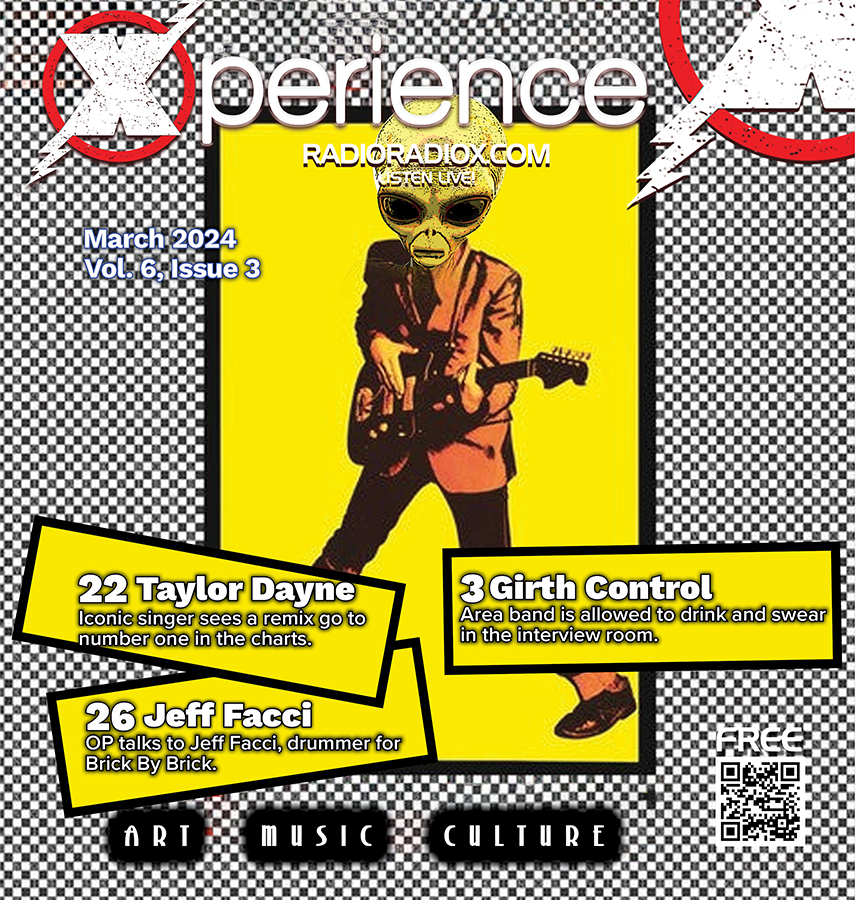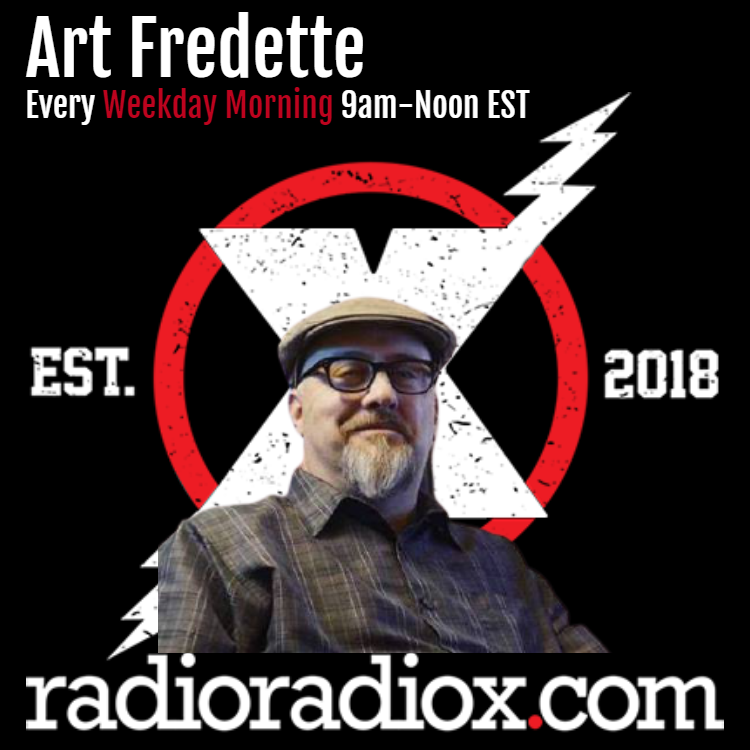Corey Aldrich-Capital Region Creative Economy-By: Liam Sweeny
By Staff on January 6, 2022
 So you’re at the show. She’s on stage singing her head-off, and the band backing her is liquid fire, as is the drink you just ordered from the bar during the summer festival the city puts on, why the girl singing her head off is onstage in the first place, a delicious little interplay between the left and right public life called the creative economy. The creative economy is often mysterious and nebulous, and if you’re not careful it might steal your cornflakes, but designer and event marketer Corey Aldrich is here to take us through the ins and the outs of this new landscape (and he might sell you back your cornflakes.) I sit with Corey and we discuss sidewalk chalk murals.
So you’re at the show. She’s on stage singing her head-off, and the band backing her is liquid fire, as is the drink you just ordered from the bar during the summer festival the city puts on, why the girl singing her head off is onstage in the first place, a delicious little interplay between the left and right public life called the creative economy. The creative economy is often mysterious and nebulous, and if you’re not careful it might steal your cornflakes, but designer and event marketer Corey Aldrich is here to take us through the ins and the outs of this new landscape (and he might sell you back your cornflakes.) I sit with Corey and we discuss sidewalk chalk murals.
RRX: You work with Upstate Alliance for the Creative Economy, or ACE. This is an amazing group of people from different backgrounds who explore the impact of creativity on the local economy, though I’m perhaps oversimplifying it a bit. How did ACE start? Was this a concept that developed over a conversation, or did it have a long history?
CA: My company is 2440 Design Studio. I work on individual and series based events, branding, doing commissioned work and project management including contractor oversight, creative and interior design work and photography. I also run a bar program for the Arts Center of the Capital Region called Arts Bar.
ACE is one of my gigs. I have been with ACE since it was a group of institutional level creative leaders from not and for profit’s meeting around a table to figure out ways to get the larger story out about the economic power of the Creative Economy. I was brought on to represent freelance creatives. ACE has gone through many iterations, always with the commitment to drive awareness about the Creative Economy of the Capital Region.
RRX: When I think of a creative economy, two sorts of visuals come to mind. One is the murals the City of Troy got someone to paint on the pillars of the Collar City Bridge underpass, the other is my friend playing at a pizza joint for fifty bucks and a slice of pepperoni. I imagine the creative economy to transcend my view. How so?
CA: Both are correct! The project called The Uniting Line includes the City of Troy, The Arts Center of the Capital Region, TAP Inc and Collar Works. The design is by artist Jade Warrick. This is actually a great example of the creative economy as an economic jobs generator and a quality of life project.
About 10 years ago I had a standing gig playing guitar at the original Lark Tavern with producer PJ Katz and regional hip hop performer Shyste Chronkyte. The gig was $50 and several pints of beer. It was the best thing ever! I love Tess, she is a great supporter of live music and entertainment and continues that story at McGeary’s.
RRX: There is a creative scene in the Capital Region much bigger than people may believe. We interview artists and advertise venues, and so we’re sensitive to what affects each; it affects us too. How does talk of the creative economy find better synergy between the business of entertainment and the art and music that entertains?
CA: All parties need to understand that we each have our supportive roles. The venue needs to promote the shows, the artist also needs to work with that. If I book an artist, there is a list of things that I need to help promo the event. Professional photos, up to date online representation, well written bios, quality video or music links. All these things can help the producer to get a professional package out to the media and marketing channels.
Our venues need to make sure they are doing what they can to be hospitable to artists as well. Have the check or cash ready when it was promised. Make sure they feel taken care of. Give your artists a proper space to prepare before the show. If it’s music, be responsive to the sound needs to help ensure a good experience for all. I have witnessed many venues that barely post more than once on their social media with no real campaign. We can do better than that.
RRX: Latching on to the last question, when we talk about the economy in any form, it can have a ‘wing-clipping’ effect to some artists, who, few of them started their craft from a business space. More are the people who just wanted to get rich. How can artists take advantage of the creative economy aside from just being the labor, so-to-speak?
CA: We want our art to be unencumbered by ‘market’ expectations or directives. Also, we need to be able to afford a place to live and things like health insurance, car payments and other normal expectations. Get your business professionally set up so that you can do things like claim legal tax write offs or protect yourself from losses by having proper insurance on tools, gear and space. Trademark and copyright. If you’re doing creative work (Writing, Performance, Fine Arts Painting, Music, Interior Design, Game Programming, Architectural Design) and you’re a freelancer, you are also a business person, your expenses should be properly accounted for.
Know your value. Do your research. Creative work is work and deserves proper compensation.
RRX: You are a designer, and you look at event design, and according to the website, you “design events that support story-based narratives.” For the layman, I think that may need a “for example.” What I do get is the importance of how a thing is presented. How do you design, present, and “frame” an event beyond just advertising?
CA: Anything I do needs to feel like it has a contribution to the greater world around us. When I am putting together an event or series, I try and understand what that purpose is for it so that I can then program accordingly. We learn best with story based narratives. If we want to make an impact with what we are doing, we need to understand what we are trying to say.
RRX: You own a design company that works with other design-area and artistic professionals. This has got to be a coin flip between very rewarding and very frustrating. I say the frustrating part because you’re getting paid to impart your vision on someone else’s vision. Do you have any philosophies you take to work with you every day?
CA: I have worked with a large percentage of the creative arts and cultural institutions in the area. Most people that come to me are word of mouth. They want me there to help create the vision, that is what I am known for. I don’t need to have the final say on everything in a project. I do need to drive the collaboration into a cohesive sense of the there there. If that is there, I am less dictatorial about every detail.
RRX: This is where you get to answer the question I didn’t ask. Educate, enlighten, emote. The floor is yours.
CA: As creatives we need to understand our value and have expectations that the larger business environment and governmental authorities take us more seriously (STEAM not STEM). ACE commissioned a study on the impact of creative industry on our region. At the time of the report, the Creative Economy employed 47,282 people and was generating $1.4 billion in earnings in the Capital Region. From a financial perspective, we were larger than the insurance and construction industries. Make no mistake, our region is amazing to live in because of us.
Have a project you’re not sure what to do with? Hit me up, we can talk.
IG / FB: @coreyaldrich | Linked In: Corey Aldrich
EMAIL: corey@2440designstudio.com





 RadioRadioX
RadioRadioX